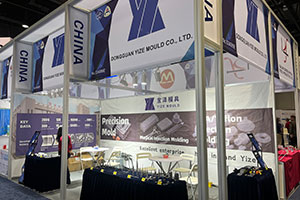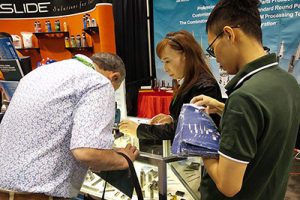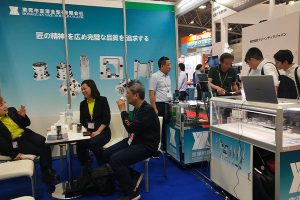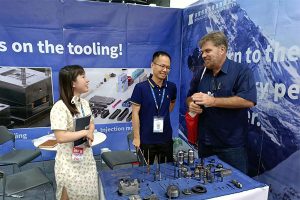Unlocking the Design Code of Tungsten Carbide Dies
In the grand landscape of modern manufacturing, tungsten carbide dies shine like a brilliant gem, playing an indispensable and crucial role. They are akin to a highly skilled behind-the-scenes craftsman, […]
In the grand landscape of modern manufacturing, tungsten carbide dies shine like a brilliant gem, playing an indispensable and crucial role. They are akin to a highly skilled behind-the-scenes craftsman, with their design quality directly determining the precision of products, production efficiency, and production costs. Therefore, gaining an in-depth understanding and precise mastery of the design principles of tungsten carbide dies are of paramount importance for enhancing die quality and meeting market demands. Next, this article will delve into the design principles of tungsten carbide dies from multiple dimensions, including material selection, structural design, and process design.
I. Material Selection: Precise Matching, Balancing Cost and Performance
Meeting Product Performance Requirements
The selection of materials for tungsten carbide dies must first and foremost meet the performance requirements of the products. This encompasses various aspects such as product dimensional accuracy, surface quality, and mechanical properties. Take high-precision machined products as an example. These products have extremely high requirements for the hardness and wear resistance of the die. In this case, it is essential to choose tungsten carbide materials with high hardness and excellent wear resistance to ensure that the die can maintain precise dimensions and good surface quality over long-term use, thereby safeguarding the precision of the products. For products that need to withstand high-temperature impacts, good thermal stability and heat fatigue resistance are key indicators for die materials. Only by selecting tungsten carbide materials with these characteristics can the die operate stably in high-temperature environments and avoid deformation or damage caused by thermal stress.
Our factory business: carbide parts, mold parts, medical injection molds, precision injection molds, teflon PFA injection molding, PFA tube fittings. email: [email protected],whatsapp:+8613302615729.
Considering Economic Costs
On the premise of meeting product performance requirements, economic costs are also an important factor that cannot be ignored. This requires a comprehensive consideration of factors such as product batch size and service life to maximize economic benefits. For instance, for products with large-scale production, although it may be possible to choose tungsten carbide materials with slightly higher initial costs but longer service lives in the early stage, in the long run, due to the reduced frequency of die replacement, the overall cost will actually be lower. On the other hand, for products with small batch sizes or short service lives, tungsten carbide materials with relatively lower costs can be selected to reduce production costs while ensuring product quality.
Taking into Account Processing Performance
The processing performance of tungsten carbide materials has a direct impact on the processing efficiency and quality of the die. Tungsten carbide materials with good machinability can reduce tool wear during processing, improve processing speed, and lower processing costs. Moreover, excellent heat treatment performance ensures that the die can obtain the desired microstructure and properties during the heat treatment process, avoiding defects such as cracking and deformation. Therefore, when selecting tungsten carbide materials, it is crucial to fully consider their processing performance to lay a solid foundation for efficient and high-quality die processing.
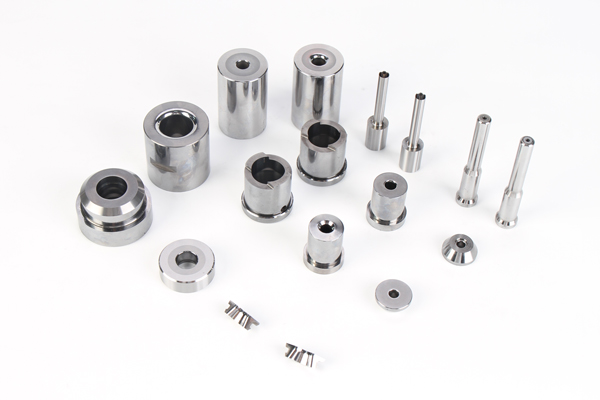
II. Structural Design: Rational and Compact, Ensuring Safety and Modularity
Principle of Rationality
The structural design of tungsten carbide dies must adhere to the principle of rationality, which means it should not only meet the processing requirements of the products but also fully consider the convenience of die manufacturing, installation, and maintenance. Take the guiding structure of the die as an example. A reasonably designed guiding structure can ensure accurate alignment of the die during the closing process, preventing die damage or product quality issues caused by misalignment. Additionally, the design of the exhaust structure in the die is also of great significance. A reasonable exhaust structure can timely discharge the gas inside the die, preventing defects such as bubbles in the products during the molding process and ensuring good surface quality of the products.
Principle of Compactness
Under the premise of meeting product processing requirements, efforts should be made to make the die structure as compact as possible, reducing the weight and volume of the die. This not only helps to lower the manufacturing cost of the die but also improves its rigidity and stability. A compact die structure can reduce vibration and deformation during processing, thereby enhancing the processing accuracy of the products. For example, by optimizing the layout and structure of the die and eliminating unnecessary components and spaces, a more compact and efficient die can be achieved.
Principle of Safety
Safety is of utmost importance in die design. In the structural design of the die, safety factors must be fully considered to prevent safety accidents during the use of the die. The lifting structure of the die should be designed to be reliable and stable, ensuring that the die will not fall off or tilt during the lifting process and safeguarding the personal safety of the operators. Meanwhile, the locking mechanism of the die should also be designed to be sturdy and durable, ensuring that the die can operate stably and safely during the closing process and preventing die damage or product defects caused by insufficient locking.
Principle of Modularity
To improve the manufacturing efficiency and usability of the die, modular design is an effective approach. The die is divided into several independent modules, each with specific functions and structures. Through the combination and replacement of these modules, rapid customization and serialized production of the die can be achieved. For example, for products of different specifications, only by replacing the corresponding modules can the size and shape of the die be quickly adjusted to meet production requirements. This not only shortens the manufacturing cycle of the die but also reduces its manufacturing cost.
III. Process Design: Efficient and Stable, Pursuing Environmental Protection and Innovation
Principle of Efficiency
The core goal of process design is to improve production efficiency. This can be achieved by optimizing the processing workflow, reducing processing time, and improving processing accuracy. Advanced processing methods such as CNC (Computer Numerical Control) machining technology and laser processing technology can significantly enhance the processing efficiency and quality of the die. CNC machining technology enables automated and high-precision processing, reducing human errors and improving processing efficiency. Laser processing technology offers advantages such as fast processing speed, high precision, and a small heat-affected zone, making it suitable for processing tungsten carbide dies with complex shapes.
Principle of Stability
Process design must ensure the stability of the die during the processing, preventing product quality degradation or die damage caused by unstable factors during processing. This requires a comprehensive consideration of factors such as the precision of processing equipment, the selection of processing parameters, and quality control during processing in the process design. Choosing high-precision processing equipment can ensure the processing accuracy and surface quality of the die. Reasonable selection of processing parameters, such as cutting speed, feed rate, and cutting depth, can improve processing efficiency and quality while reducing tool wear and die deformation. Strengthening quality control during processing and promptly detecting and resolving problems that arise during processing can ensure the stable and reliable processing quality of the die.
Principle of Environmental Protection
With the continuous enhancement of environmental awareness, process design should also emphasize environmental protection. In process design, efforts should be made to use environmentally friendly materials and processing methods to reduce the emission of waste and pollutants during processing. For example, choosing recyclable materials can reduce environmental pollution. Adopting dry processing technology can avoid the use of cutting fluids, reducing the cost of waste liquid treatment and the harm to the environment. At the same time, it is also necessary to consider energy consumption during processing and take energy-saving and emission-reduction measures. By optimizing the process flow and improving equipment utilization, energy consumption can be reduced, achieving green manufacturing.
Principle of Innovation
Process design should be innovative, continuously exploring new processing methods and technologies to meet the market’s demand for high-precision and high-quality products. Paying attention to the development trends of new materials and new technologies and applying them to die process design can enhance the competitiveness of the die. For example, the emergence of 3D printing technology has brought new opportunities to die manufacturing. Through 3D printing technology, complex die structures can be directly manufactured, shortening the manufacturing cycle of the die and reducing manufacturing costs. Moreover, 3D printing technology also enables personalized customization, meeting the diverse needs of the market.
The design principles of tungsten carbide dies constitute a complex and systematic project that requires a comprehensive consideration of multiple factors such as material selection, structural design, and process design. Only by adhering to these principles, selecting materials reasonably, optimizing structural design, and improving process design levels can high-quality, high-efficiency, and high-safety tungsten carbide dies be designed. This not only helps to improve product quality and production efficiency, reduce production costs and environmental pollution but also injects powerful impetus into the sustainable development of the manufacturing industry, driving it towards a more glorious future.



